Cysticercosis is a parasitic tissue infection caused by ingestion of pork tapeworm eggs through fecal-oral transmission or auto-infection. Humans act as a definitive host in this disease.
CNS manifestations are discussed in the article on neurocysticercosis.
On this page:
Epidemiology
The disease is endemic in areas with both poor sanitation and pigs, affecting billions of people globally, notably in Central and South America, Asia, and Africa 4.
Pathology
Etiology
The etiological agent is the pork tapeworm Taenia solium. Pigs are the intermediate host and humans are the definitive host.
Life cycle
Cysticercosis occurs when eggs are ingested in faecally contaminated food or water and hatch into larvae in the small intestine. The larvae penetrate the bowel wall and spread hematogenously, preferentially affecting skeletal muscle and brain, but no organ is exempt 3,4. Thus, cysticercosis can occur in people who do not eat pork.
People who eat undercooked pork containing cysticerci (encysted larvae) develop taeniasis, - the larvae grow into adult worms attached to the intestine by hooks on the scolices. Eggs and proglottids are shed in human feces and can cause cysticercosis if ingested by humans or pigs, in the latter case this completes the life cycle (see figure 1) 3,4.
Disseminated cysticercosis is uncommon and occurs when there is a high larval load. Larvae encyst in tissues and are viable for some months. When they degenerate they provoke an inflammatory reaction which can cause seizures if intracerebral or painless muscle swelling, weakness and ischemia if skeletal muscle is infected. Eventually the cysticerci die and calcify causing dots in the brain or elongated rice-like calcifications in skeletal muscle.
Radiographic features
The small cysts have simple fluid characteristics and contain an eccentric dot, echogenic on ultrasound, hyperattenuating on CT and hypointense on T2-weighted MRI. In skeletal muscles, degenerate cysticerci appear as elongated calcifications parallel to the muscle fibers, termed rice-grain calcifications.
Treatment and prognosis
Anthelmintics reduce the parasite load and steroids reduce inflammation.


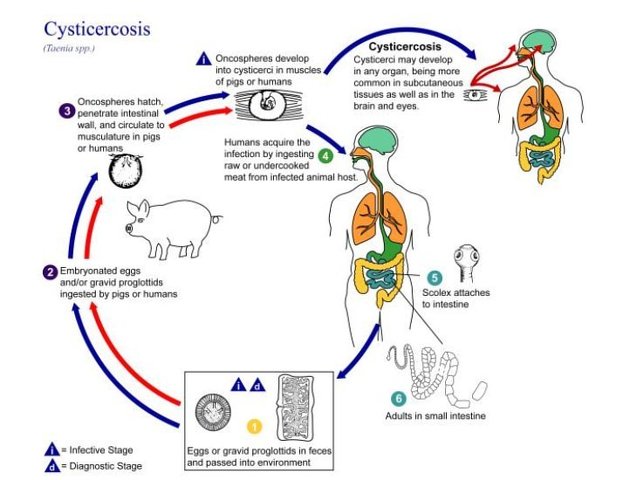
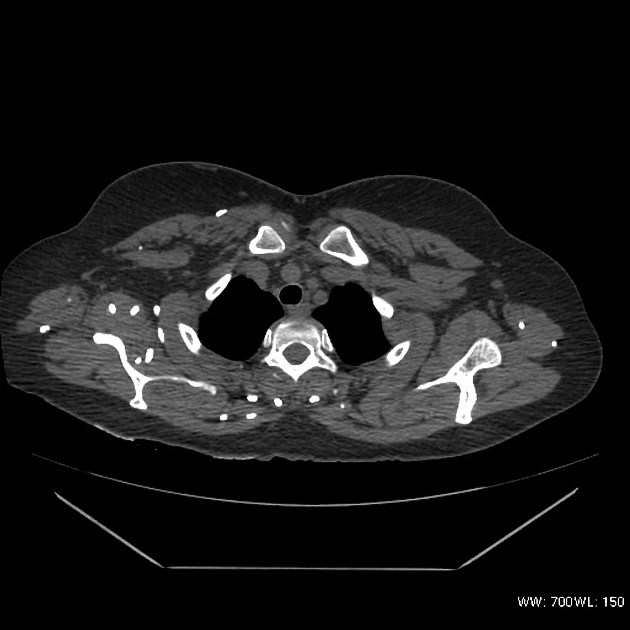
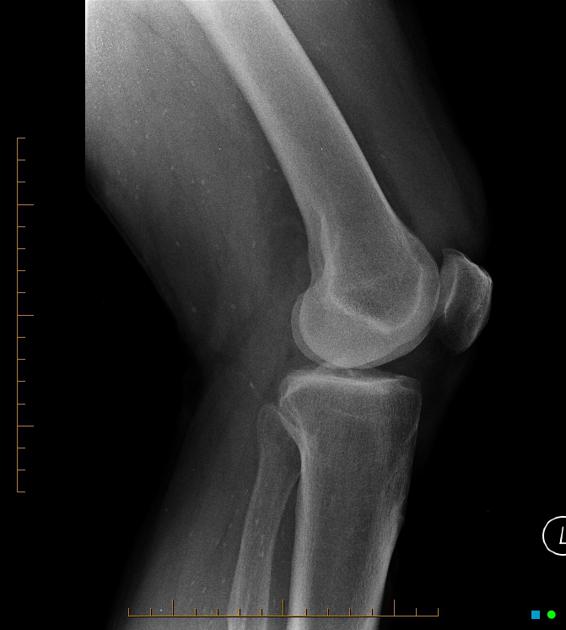
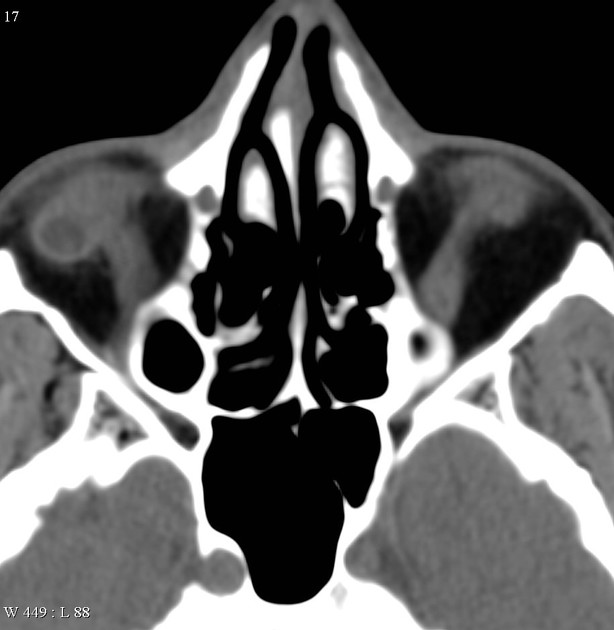

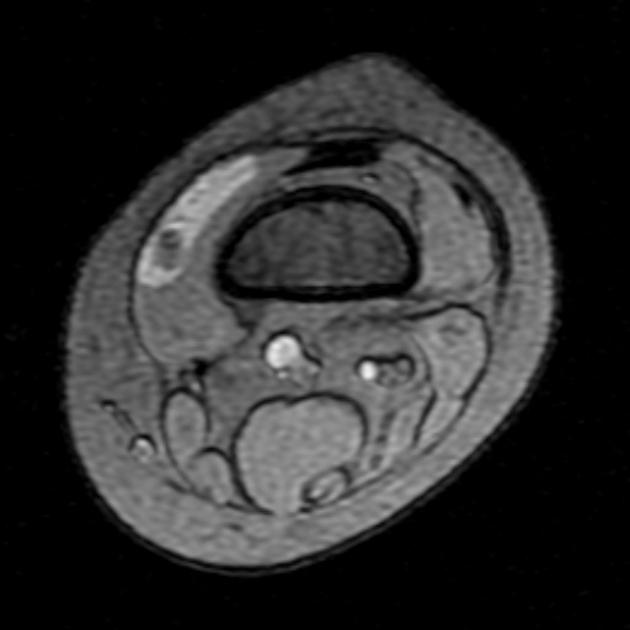
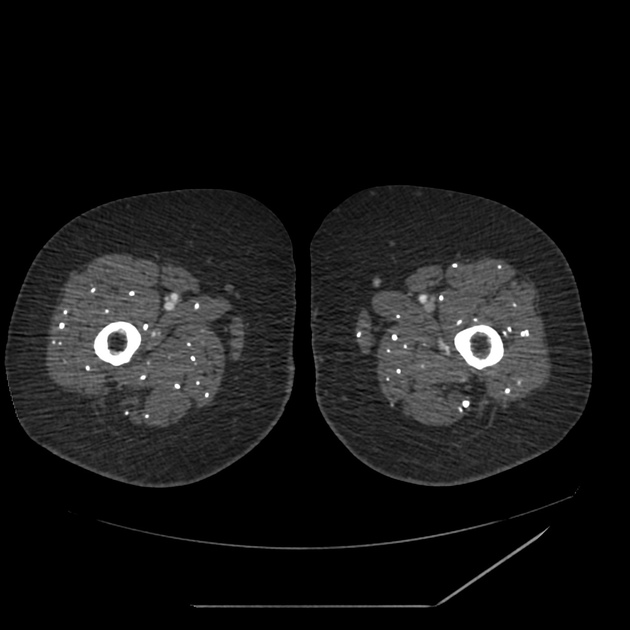
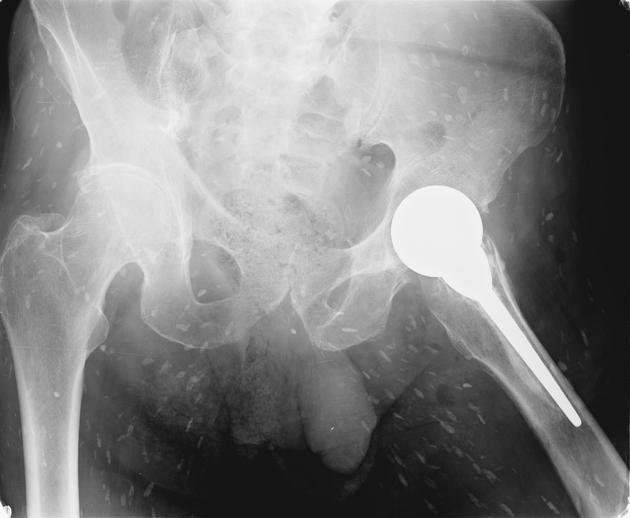
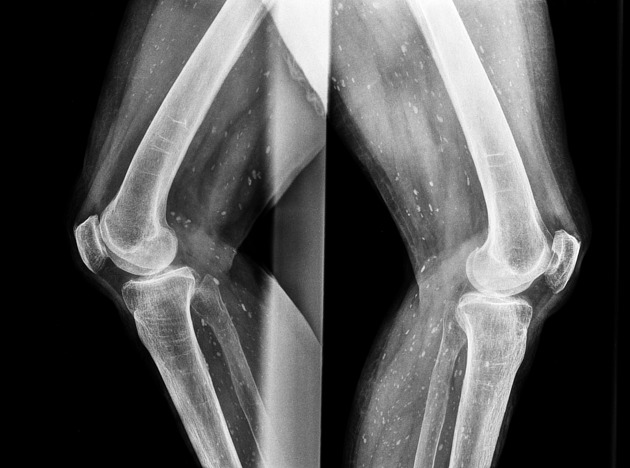
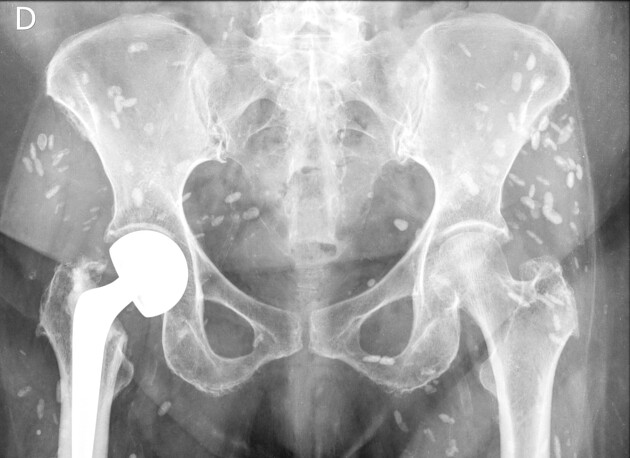


 Unable to process the form. Check for errors and try again.
Unable to process the form. Check for errors and try again.